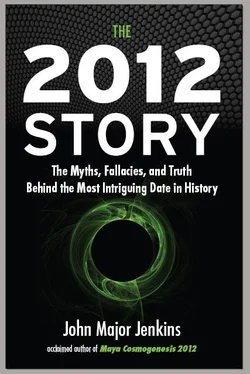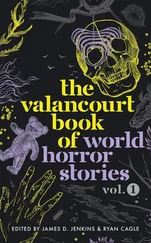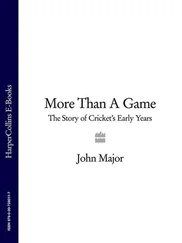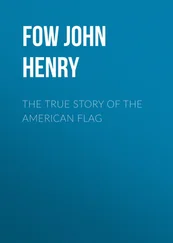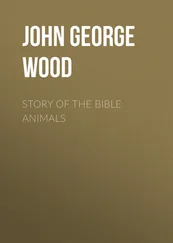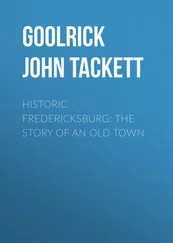Over a period of inspired investigation in the early 1970s, Terence worked out a mathematical wave form based on the 384 lines of change that make up the 64 hexagrams of the I Ching. Each of the 64 hexagrams contains six lines, each being either solid or broken. When you consult the I Ching as a traditional oracle, you build these binary lines sequentially from bottom to top. When you are finished, you can look up your hexagram in the I Ching: Book of Changes and consult the reading. The sequence in which the 64 hexagrams are ordered, known as the King Wen sequence, appears to be random, but Terence did an analysis of the “degree of difference” between each successive hexagram and found a statistical anomaly suggesting that, for some reason, the Ken Wen sequence was an intentional construct. With the degrees of difference codified into numerical values, Terence was able to graph a wave, and this became the Novelty Time Wave. His friend Peter Meyer worked out the formula and computer software enabling them to graph it and explore its dynamics.
Terence noticed that the time wave exhibited a quality of “self-same similarity.” It unfolded like a fractal pattern in which a given small section of the wave was found to be identical in form to a larger section of the wave. Because the wave displayed the ebb and flow of novelty within time, Terence called this fractal modeling of time Temporal Resonance. 5It implied that larger intervals, occurring long ago, contained the same amount of information as shorter, more recent, intervals. History was being compressed, moving quicker. And the process had to have an end.
Terence’s tetherball analogy describes the quickening process nicely: A ball tied by a long rope to a pole will swing around and around very slowly, but as the rope wraps around the pole and the ball draws closer it revolves more and more quickly. The closer the ball gets to the center, the more quickly it is drawn toward it. The center point is when the ball theoretically reaches infinite velocity. In truth, the mathematical wave form doesn’t really describe a constant acceleration; the staccato up-and-down pattern of the wave implies an ongoing vacillation between habit and novelty. The wave trends, however, with each successive iteration, toward infinite novelty. The mean average trend is one of increasing novelty, experienced as accelerating change. A requirement of the Time Wave Zero theory is thus that infinite novelty will be reached on a specific date.
Terence suspected that notable events in history could be identified that would help him locate the time wave’s end date. He took the atomic explosion of 1945 as an extremely novel event in human history and the signal that a final phase had begun, a 67-year fractal subpattern of the entire wave. Thus, add 67 to 1945 and 2012 was a possible target year. Population growth, peak oil, and pollution statistics also pointed him to the early twenty-first century. In The Invisible Landscape he mentions the year 2012 but goes no further in precision. He later admits that his original calculation was to November 17, 2012, but after he learned of the Maya calendar end date on December 21, he recalibrated the wave form and found that December 21 fit even better. Thus, Terence’s model was forever after correlated with the end date of the 13-Baktun cycle of the Maya Long Count.
Although Terence would sometimes mention the Maya in various contexts, usually for their psychoactive shamanism, the fact that his Time Wave also pointed to the cycle ending of the Maya Long Count was merely an ancillary confirmation of his theory. In one rumination on the topic, Terence noted that both he and the Maya were aficionados of psilocybin mushrooms and wondered if somehow this could explain why both his system and the Maya calendar pointed to 2012.
In all the hundreds of interviews and recorded talks that Terence did, many of which are freely available on the Internet, one finds scant details about the Maya calendar. In fact, the length of the 13-Baktun cycle is mistakenly reported as being either 5,128 or 5,200 years. The reasons why the Maya calendar points to 2012 were not things he pursued. Yet the precessional alignment of sun and galaxy (the galactic alignment) was there in The Invisible Landscape , mentioned briefly and obliquely . In his introduction to my book Maya Cosmogenesis 2012 Terence took the opportunity to elaborate a recommendation he had for further investigation of the galactic alignment:
[I]s there some scientific basis for the idea that when the winter solstice sunrise “stands” on the galactic center that any unusual physical effects might be expected? Today science answers in the negative. But science, unlike religion, is ever growing and revisiting and revising its own past simplifications…. Is human fate and the larger drama of the galaxy somehow linked? Coupling mechanisms may be difficult to prove, but elucidation of subtle coupling mechanisms is what the new science of dynamics is designed to do. 6
As so often happens in the process by which ideas develop into breakthroughs, the key to understanding 2012 was noted early on as an oddity but passed by. After all, one might note both the alignment and the end date but not believe they were close enough to each other in time. This would be a prima facie conclusion that, upon some consideration, could be disposed of—primarily because the alignment must be conceived as a range extending over at least thirty-six years.
Furthermore, how would one go about proving that the Maya intended their end date to target the alignment? It simply wasn’t something that Terence was drawn to elaborate—it requires a long-term commitment to carefully researching many different areas of Maya thought and tradition. My own interests and studies were to converge with this alignment concept, however, and by 1992 I was on it. And to his credit Terence encouraged my work, even though it would call into question his requirement that something drastic and sudden should occur on December 22, 2012. (Terence often used December 22, perhaps because the twenty-second would be the “first” day of the new era.)
Another idea I proposed to Terence in our conversations—and he was always willing to entertain ideas—is based on the idea that the flow of time is subjective. One’s experience of time, fast or slow, is a function of the state of mind one is in. This can be noted in the reports of elderly people, for whom time seems to go very quickly. How many times has Grandma said, “Why, it seems like I just woke up and now it’s time to go to bed,” or “Last Christmas seems like it was here just yesterday!”
There are real neurological reasons for this experience of the elderly, based in the brain’s synaptic processing of information, which slows down with age. The bandwidth, you might say, has narrowed and therefore events (time) must pass through a smaller conduit. Consciousness thus restricted experiences time moving more quickly. Visionaries experiencing ecstasy, however, undergo a heightened and intensified cerebral processing, an enlarging of the synaptic bandwidth, resulting in time slowing down. When it slows down so much that the experience of the flow of time has ceased, the door to eternity is opened. Eternity isn’t a long period of time; eternity is the cessation of time.
Being deeply in love provides another example. When two people are having a peak experience of intimacy, the heart and mind (even the eyes) will dilate. It can be a profound experience in which both feel they have, together, entered a timeless inner sanctum and eternity has been glimpsed. Eternity is the experience of the cessation of the passage of time, time slowed down because the mind and heart have been completely opened in love. The consciousness expansion that frequently occurs after ingesting psychoactive plants can also provide an experience of glimpsing infinity or eternity, as explorers have reported. In ancient mystery religions, the experience was an initiation into the eternal Mysteries.
Читать дальше
